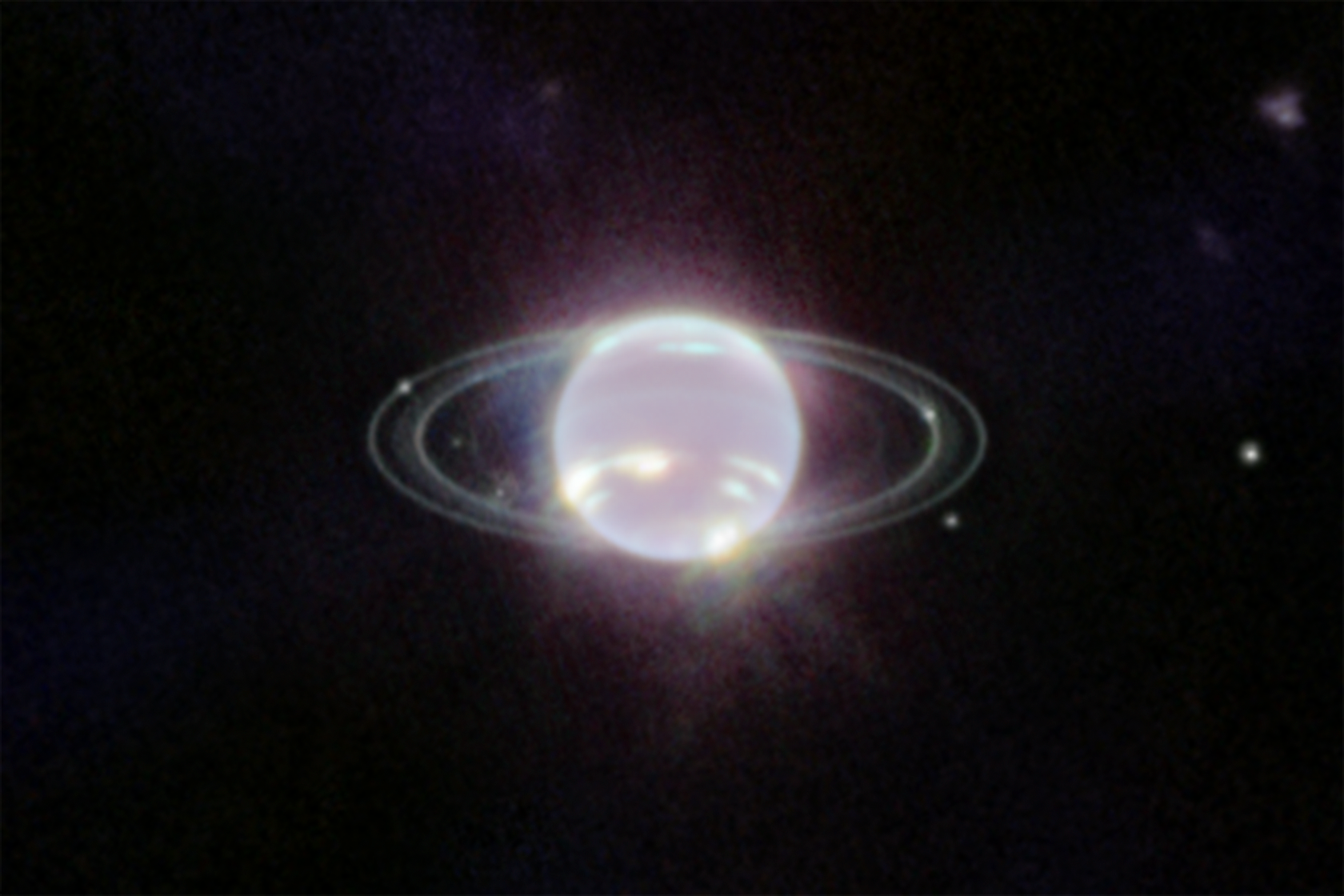It looks like you're using an Ad Blocker.
Please white-list or disable AboveTopSecret.com in your ad-blocking tool.
Thank you.
Some features of ATS will be disabled while you continue to use an ad-blocker.
16
share:
The latest image to be released by NASA's Webb team takes a look at far flung Ice Giant Neptune , the image shows Neptune's Methane ice clouds , its
rings and 6 of its 14 Moons , far right is Proteus , Larissa right edge of rings , Despina inner right ring , Thalassa and Naiad left inner ring and
Galatea on the left outer ring.

In the image at the link Neptune’s "large and unusual" Moon Triton can be seen just below center right sporting the signature diffraction spikes.

Webb’s Near-Infrared Camera (NIRCam) images objects in the near-infrared range from 0.6 to 5 microns, so Neptune does not appear blue to Webb. In fact, the methane gas so strongly absorbs red and infrared light that the planet is quite dark at these near-infrared wavelengths, except where high-altitude clouds are present. Such methane-ice clouds are prominent as bright streaks and spots, which reflect sunlight before it is absorbed by methane gas. Images from other observatories, including the Hubble Space Telescope and the W.M. Keck Observatory, have recorded these rapidly evolving cloud features over the years.
More subtly, a thin line of brightness circling the planet’s equator could be a visual signature of global atmospheric circulation that powers Neptune’s winds and storms. The atmosphere descends and warms at the equator, and thus glows at infrared wavelengths more than the surrounding, cooler gases.
Neptune’s 164-year orbit means its northern pole, at the top of this image, is just out of view for astronomers, but the Webb images hint at an intriguing brightness in that area. A previously-known vortex at the southern pole is evident in Webb’s view, but for the first time Webb has revealed a continuous band of high-latitude clouds surrounding it.
www.nasa.gov...
In the image at the link Neptune’s "large and unusual" Moon Triton can be seen just below center right sporting the signature diffraction spikes.
edit on 24-9-2022 by gortex because: (no reason given)
I saw this towards the beginning of the week when it was released.
I couldn't believe how beautiful it looked, these new images coming from the JWT are magnificent.
I couldn't believe how beautiful it looked, these new images coming from the JWT are magnificent.
a reply to: gortex
So cool.
I went for a bit of trip when Neptune didnt look its traditional shade of blue that many of us are accustomed to. This was interesting to read
So cool.
I went for a bit of trip when Neptune didnt look its traditional shade of blue that many of us are accustomed to. This was interesting to read
so Neptune does not appear blue to Webb. In fact, the methane gas so strongly absorbs red and infrared light that the planet is quite dark at these near-infrared wavelengths, except where high-altitude clouds are present. Such methane-ice clouds are prominent as bright streaks and spots, which reflect sunlight before it is absorbed by methane gas.
Beautiful and awe inspiring.
It's great the use it for imaging our solar neighbors, I hoped for it.
It's great the use it for imaging our solar neighbors, I hoped for it.
I'm old enough to literally remember when we got our first pictures of Neptune from Voyager 2. How far we have come.
new topics
-
12-21-24 Usyk-Fury II
World Sports: 1 hours ago -
Driving home for Christmas… fast!
General Entertainment: 5 hours ago -
My Retirement
General Chit Chat: 6 hours ago -
‘Something horrible’: Somerset pit reveals bronze age cannibalism
Ancient & Lost Civilizations: 7 hours ago -
Spiritual Solstice
Short Stories: 9 hours ago
top topics
-
My Retirement
General Chit Chat: 6 hours ago, 11 flags -
Spiritual Solstice
Short Stories: 9 hours ago, 5 flags -
‘Something horrible’: Somerset pit reveals bronze age cannibalism
Ancient & Lost Civilizations: 7 hours ago, 4 flags -
Driving home for Christmas… fast!
General Entertainment: 5 hours ago, 3 flags -
12-21-24 Usyk-Fury II
World Sports: 1 hours ago, 1 flags
16
